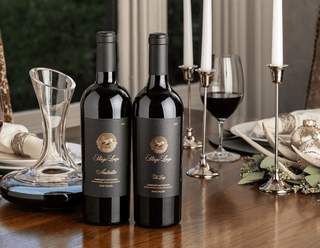Proper wine storage is crucial for preserving the quality and extending the lifespan of your wines. Whether you're storing wine for short-term enjoyment or long-term aging, certain environmental factors must be considered to ensure each bottle remains in its best condition. Here's what you need to know about temperature, light, and humidity for optimal wine storage.
Temperature
Ideal Temperature Range: The optimal temperature for storing wine is between 45°F and 65°, with 55°F often cited as the perfect temperature. Consistency is key; fluctuations in temperature can harm the wine by causing it to age prematurely or develop unwanted characteristics.
Avoid Extreme Temperatures: Wine should never be stored in a place that could become too hot (above 70°F) or too cold (below 45°). Extreme temperatures can damage the wine, affecting its flavor and quality.
Light
Minimize Light Exposure: Wines are sensitive to light, especially direct sunlight and fluorescent fixtures, which can degrade and prematurely age the wine. UV rays can break down the complex molecules that contribute to a wine's aroma and flavor.
Best Lighting Conditions: Store wines in a dark place, or if they are under artificial lights, use incandescent bulbs rather than fluorescent lighting to minimize potential damage.
Humidity
Ideal Humidity Level: The optimal humidity level for wine storage is between 50% and 70%. This range helps keep the cork from drying out and shrinking, which could allow air to seep into the bottle and spoil the wine.
Managing Humidity: If you live in a dry climate or are using a storage area where air tends to be dry, consider using a humidifier to maintain the proper humidity. Conversely, in very humid conditions, a dehumidifier can prevent mold growth and ensure the labels on the bottles remain intact.
Additional Tips for Optimal Wine Storage
Orientation
Store wine bottles horizontally or upside down to keep the liquid against the cork, which helps prevent the cork from drying out.
Vibration
Minimize vibration as much as possible, as it can disturb the sediments in the bottle, potentially affecting the wine's aging process and quality.
Storage Solutions
If you don't have access to a wine cellar, consider investing in a wine fridge or cooler designed to maintain the ideal conditions for wine storage. For smaller collections or short-term storage, a cool, dark closet or cabinet away from direct heat sources can suffice.

By adhering to these best practices for wine storage, you can protect your investment and enjoy your wines as the winemakers intended, with each bottle showcasing its best qualities and flavors.



